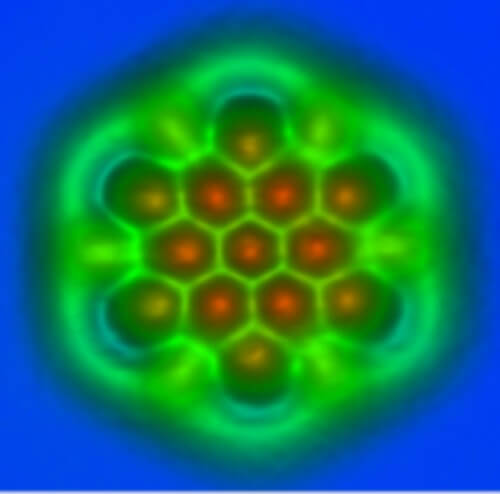The research in question is included in the field of attophysics - tracking particles on a time scale of atto-seconds (10-18 billionths of a billionth of a second)
![An image showing the change in electron density in a molecule. [Courtesy: Moscow Institute of Physics and Technology]](https://www.hayadan.org.il/images/content3/2015/11/151022191912_1_540x3601-500x306.jpg)
[Translation by Dr. Nachmani Moshe]
Physicists working in the field of theoretical physics have now proven that it is possible to follow and control the movement of electrons within molecules.
The research in question is included in the field of attophysics - tracking particles on a time scale of atto-seconds (the billionth of a billionth of a second, 10-18). For the first time ever, physicists were able to make observations on an extremely fast time scale of 100 attoseconds. The breakthrough promises researchers control over the movement of electrons in chemical reactions. The researchers, led by Dr. Hans Jakob Wörner from the Swiss Federal Institute of Technology (ETH Zurich), and in collaboration with researchers from Moscow, were able to follow the movement of electrons within a molecule in real time and demonstrated that these processes can be controlled, so that in the future it will be possible to directly control the progress of chemical reactions and biological processes to obtain the desired result. The research findings have just been published in the prestigious scientific journal Science.
Using the methods of atophysics, researchers try to follow the super-fast movement of electrons within molecules, or more precisely, to follow their reorganization within the electron shells (electron density). These processes are the key to understanding chemical and biological reactions, in light of the fact that the "new dispersion" of electrons is responsible for the creation of new chemical bonds. "During the research we were able to observe the movement of electrons along a linear molecule. We were able to see, for the first time ever in history, the movement of the electrons, and how this movement occurs, in minute detail. In addition, we were able to demonstrate that this movement can be controlled, and therefore, it is possible, theoretically at the moment, to control the results of chemical reactions", explains one of the researchers.
As part of their experiments, the researchers used molecules of iodoacetylene (iodoacetylene HCCI, ), whose structure consists of elongated chains with only four atoms - hydrogen, two carbon atoms and one iodine atom. When exposed to extremely powerful and fast laser pulses, the configuration of the electron shell changes: a "hole" is formed - a space inside the shell that begins to oscillate from one end of the molecule to the other. The researcher emphasizes that this movement is not like the movement in the conventional sense of our day-to-day life, within the framework of the laws of classical physics. "As a result of ionization resulting from tunneling after exposure to a powerful laser field, a superposition of two quantum states of the hole emerges - a state reminiscent of Schrödinger's cat paradox, where the cat is both alive and dead at the same time; In this state of assembly, the hole may be at opposite ends of the molecule at the same time. The probability of "finding" the hole in which of the ends changes over time, and this change is the cause of the result of a hole "wandering" along the molecule. The hole moves from one end of the molecule to the other and the typical time required for this migration is approximately 100 attoseconds," explains the lead researcher.

By irradiating molecules that are in a defined orientation with powerful laser beams, the researchers were able to obtain spectra that reflect the state of the electron shells in the molecules. In this experiment the researchers were able to obtain a complete set of data, including the relative occurrences of the harmonics required to reproduce a dynamic hole. The researchers' task was to isolate the information about the dynamics from the data obtained, and learn from this how to decipher the spectra, just as astrophysicists use the Doppler effect of the star's spectrum to calculate its speed. "In reality, we are not observing the exact position of the electrons, but rather the spectrum of harmonics obtained as a result of the interaction between the powerful laser beams and the molecules. With the help of these spectra, which are indirectly related to the movement of the hole, it is possible to reconstruct its position, and this is exactly what we did as part of our experiments," explains the researcher. In addition, by changing the polarization of the laser beam, the researchers demonstrated the ability to influence the dynamics associated with the reorganization of the electron shell in a molecule with the help of a laser field. "This reorganization is ultimately responsible for the results of all chemical reactions. If you have a mixture of reactants that may lead to a number of possible products, then through an informed choice of the types of laser beams it will be possible to choose the product you want, and only that one," explains the researcher.
